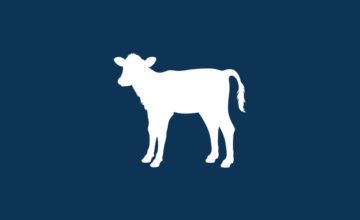Lambing Checklist
- Mar 16, 2009
- By Grober Nutrition
- In Canada, USA
- Prepare Buildings – Ensure barns have good ventilation, are dry, no drafts, and a strict cleaning schedule as been prepared.
- Prepare supplies well ahead of lambing. For example- lambing equipment, thermometer, warming box, frozen colostrum etc.
- Select lambs for artificial rearing, e.g. the weaker, less aggressive lambs from ewes with three or more lambs, and malnourished or mis•mothered lambs from other ewes. Ideally leave similar weight, thrifty lambs with the ewe to avoid competition. Remove weak and ‘uneven’ lambs for rearing with milk replacer.
- Ensure adequate colostrum intake by suckling, bottle or stomach tube within 12 to 18 hours after birth. Lambs require 50ml/kg (.85oz/lb) body weight; one feed right at birth and then every 4-6 hours for the first 24 hours. For example a 4kg (9lb) lamb should receive 850 ml (1.5pt). The quantity should be increased by 20-30% for lambs outside in bad weather (one extra feed).
- Administer selenium, according to vet’s recommendation, to prevent white muscle disease.
- Only use a high quality milk replacer specifically formulated for lambs, e.g. Grober Lamb-Gro. Calf milk replacer is unacceptable. Lambs require different protein/fat content and ratio, no added copper and a specific mineral and vitamin package.
- Check mixing recommendations with your supplier and have suitable weigh scales/cups available.
- Train lambs to drink from nipple as soon as possible after the last feeding of colostrum.
- Observe lambs closely and regularly for drinking behaviour, lamb vigour and signs of ill health or starvation. Treat as soon as possible.
- Clean all milk feeding equipment daily: rinse in lukewarm water, wash with a detergent in hot water, rinse with clean water (ideally a 10% bleach solution) and dry thoroughly.
- Place all foodstuffs such as hay, pellets and water in containers that reduce contamination by the lamb and clean regularly. Ensure water bowels have clean, fresh water daily.
- Group lambs according to age and body weight and supply sufficient nipples (e.g. 5-6 lambs /nipple at start and increase to 10-25 lambs/nipple depending on machine and space etc).
- By five days of age, provide lambs with a free-choice source of water and a highly palatable, high protein (18 to 20% crude protein) lamb creep feed to encourage early rumen development. Continue feeding high protein dry feed until lambs weigh 18 kg (40 lb). Then switch lambs to a lower protein growing feed or place lambs on high quality pasture for grazing.
- Vaccinate lambs for Clostridium perfringens C & D at 3 to 4 weeks of age and booster 3 weeks later.
Tags: Lamb
Grober Nutrition
Recent Posts
Tags
Archives
- October 2024
- July 2024
- May 2024
- April 2024
- January 2024
- December 2023
- October 2023
- September 2023
- August 2023
- June 2023
- December 2022
- November 2022
- October 2022
- August 2022
- July 2022
- June 2022
- May 2022
- April 2022
- March 2022
- February 2022
- January 2022
- August 2021
- February 2021
- September 2020
- June 2020
- April 2020
- May 2017
- April 2017
- October 2016
- September 2016
- August 2016
- March 2016
- March 2015
- January 2015
- December 2014
- December 2013
- September 2013
- May 2013
- January 2013
- December 2012
- November 2012
- March 2012
- March 2011
- February 2011
- November 2010
- August 2010
- December 2009
- November 2009
- March 2009















